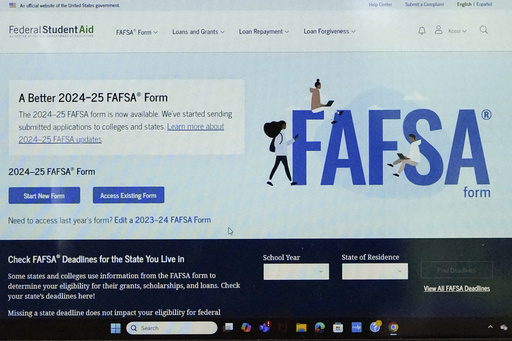
The federal Student Aid application, known as FAFSA, became available for high school seniors across the country on Thursday. This launch comes a year after a troubled introduction by the Biden administration resulted in significant delays in the application process.
Following several weeks of thorough testing, the Department of Education has confirmed that the online application has not encountered any major issues this year. Although the release is later than the customary start date of October 1, it is still much earlier than the late January start of the prior year. The department had committed to making this year’s application accessible by December 1.
Education Secretary Miguel Cardona expressed optimism about the new application, stating, “After months of hard work and substantial feedback from students, schools, and other stakeholders, we can confidently say that FAFSA is operational and will act as a vital entry point to college access and affordability for millions of students.”
During four testing phases, over 140,000 students successfully submitted their FAFSA applications, with their data now forwarded to more than 5,200 colleges. Last year’s attempt at a revamp aimed to simplify the notoriously complicated application but was marred by technical issues that prevented students from submitting forms or caused errors in their financial calculations.
The federal government relies on these student applications to establish eligibility for financial aid. Additionally, colleges and state governments utilize FAFSA to allocate their scholarships. The prior delays raised uncertainty for students and families regarding potential financial aid, an important consideration for many.
Advocates have suggested that the complications likely discouraged numerous students from pursuing higher education altogether. According to data from the National Student Clearinghouse, there has been a 5% drop in freshmen enrollment in U.S. colleges compared to the previous year, with the decrease being more significant at institutions serving large populations of low-income students.
The Education Department has indicated that the issues from last year have been rectified and has added 700 more call center representatives to assist families who may encounter difficulties when filling out the FAFSA.
Recently, both the Senate and House moved swiftly to pass legislation mandating that the Education Department ensure the FAFSA is available no later than October 1.
The Biden administration faced bipartisan criticism for its management of the FAFSA update, with Republicans accusing it of prioritizing student loan forgiveness initiatives while neglecting the application process.
This overhaul followed Congressional action in 2020, which aimed to streamline the FAFSA process. The Department of Education was instructed to reduce the number of application questions from over 100 to approximately 40 and to modify the eligibility formula to extend assistance to a larger pool of students.
